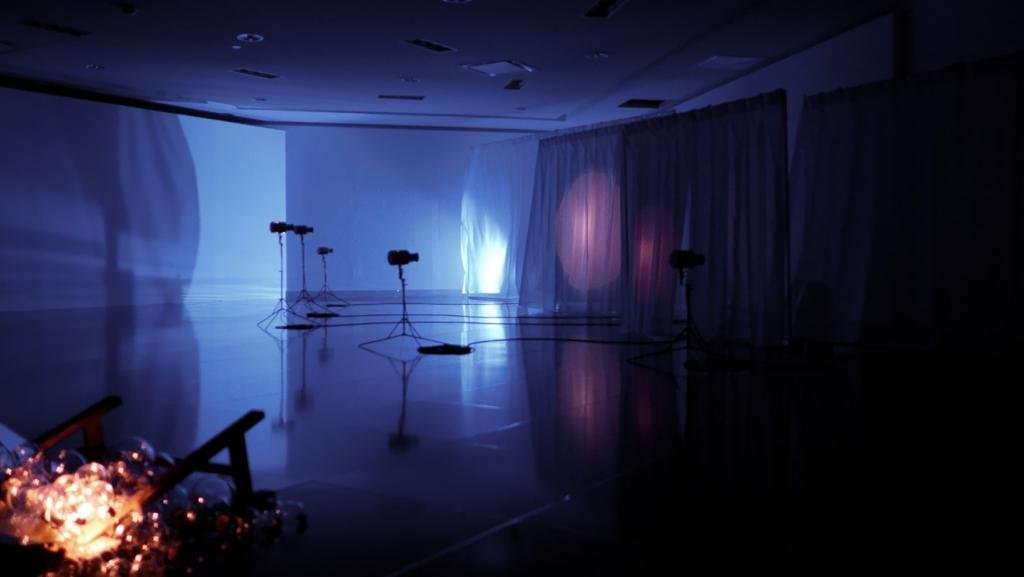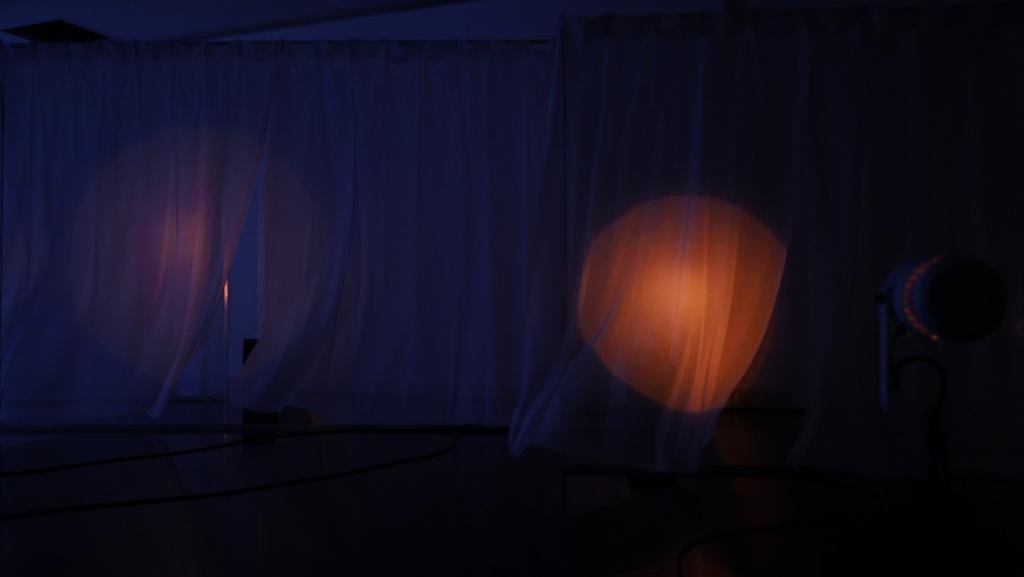hawai‘i triennial 2022
@ ROYAL HAWAIIAN CENTER
Tsuyoshi Hisakado
b. 1981, Kyoto, Japan
lives and works in Kyoto
Installation views: Tsuyoshi Hisakado, Pause, 2022, halogen light, sound, georgette, aluminum, light bulb, glass, chestnut wood. Hawai‘i Triennial2022, Royal Hawaiian Center, Waikīkī. Courtesy of the artist. © Tsuyoshi Hisakado. Photos: Tsuyoshi Hisakado
A graduate of Kyoto City University of Arts with a MFA in sculpture, Tsuyoshi Hisakado is known for installations that combine everyday objects with intangible materials such as light and sound; mediums that allow him to imbue work with a distinct poetic theatricality akin to a dreamlike Noh play. His intuitive reading of the place of display is as important as his process of collecting samples of various natural phenomena and researching relevant histories, events, or individuals. The outcome is a space of condensed effects and inferred narratives that encourages the viewer to take part in meditative engagement. In many of his installations an atmosphere of absence looms large, inviting us to imagine the passage of time and ephemerality of our existence. This key characteristic might derive from his reaction to the 2011 Great East Japan Earthquake, a major disaster that has influenced many Japanese artists. With the occurrence of the earthquake, Hisakado left his work at a product design company in Tokyo and returned to Kyoto to pursue art again.
In his 2017 installation Gale, Hisakado occupied the dark ground-floor space of an old watchtower in Nijo Castle in Kyoto. He created a circular space, lining the room with a series of glass vitrines, each containing a light bulb programed to gently sway as the bulb gradually lit up, then slowly come to stop as the light dimmed. Intensity of movement and brightness were synchronized until abruptly ceasing—the stillness, darkness, and silence of the room arresting the viewer in a hypnotic atmosphere. As eyes adjusted to the environment, a subtle light could be seen shining from the top of a narrow and steep staircase connecting to the upper level of the tower. From somewhere distant, not immediately detectable but perhaps from the space above, came the sound of rolling thunder. As the roar subsided, and after a moment of nothingness, the full cycle of light and motion was repeated. Despite the absence of narrative, the historical context of the watchtower, alongside the stormy ferocity of nature and the primordial fear that darkness incites, led viewers to imagine a history of violence, warfare, and death.
Although Hisakado utilizes mundane, everyday objects and focuses on subtlety rather than spectacle, his work is able to conjure a sense of history; a timespan greater than one’s lifetime. Without overt didacticism, it gently allows a moment of reflection. For HT22 he presents Pause (2021), using sculptural elements as well as light, sound, and wind. This commission is a result not only of his contemplation on the complex history of Hawaiʻi but also of his experience of inner conversation during a time of isolation caused by the COVID-19 pandemic.
Tsuyoshi Hisakado. Photo: Yuichiro Tamura.
Tsuyoshi Hisakado’s practice as an artist involves collecting samples of various phenomena and histories, and then employing elements of sound, light, and sculptural objects in order to create theatrical spaces that reunite individual memories and narratives. Hisakado's practice focuses on the seemingly mundane aspects of everyday life. He assembles evidence of history and phenomena that are unique to specific places, creating installations that combine sound, light, and sculpture. Hisakado was elected the East Asian Cultural Exchange Envoy and has been awarded the 'Mercedes-Benz Art Scope 2018-2020', the Audience Award at the 'NISSAN ART AWARD 2015', and the Grand Prize of the 'VOCA 2016 The Vision of Contemporary Art'.
Major exhibitions in recent years include the solo exhibition Tsuyoshi Hisakado— Practice of Spiral (Toyota Municipal Museum of Art, Aichi, 2020), Mercedes-Benz Art Scope 2018-2020 (Hara Museum, Tokyo, 2020), Aichi Triennale 2016, and MAM Project 025: Apichatpong Weerasethakul + Tsuyoshi Hisakado (Mori Art Museum, 2018).





